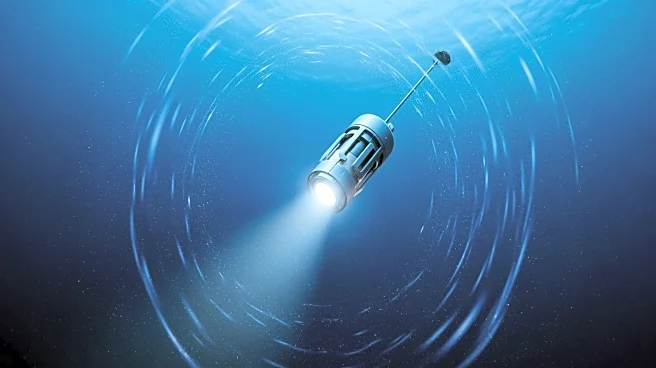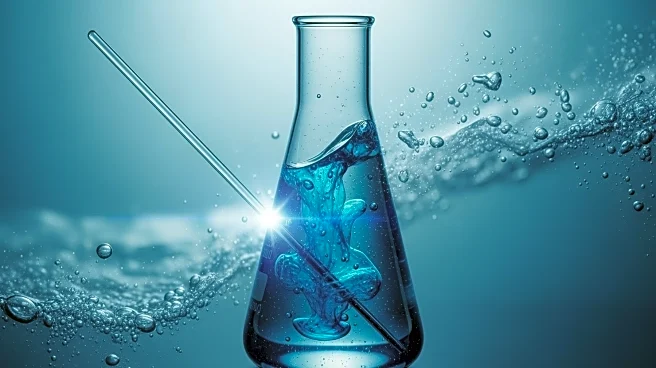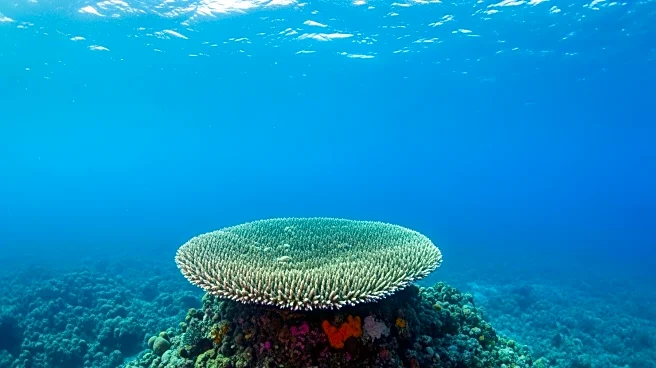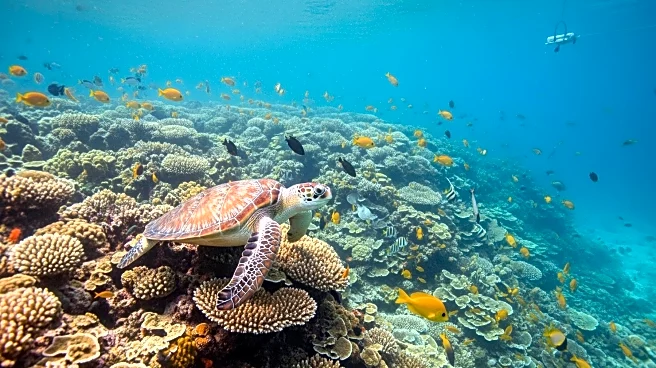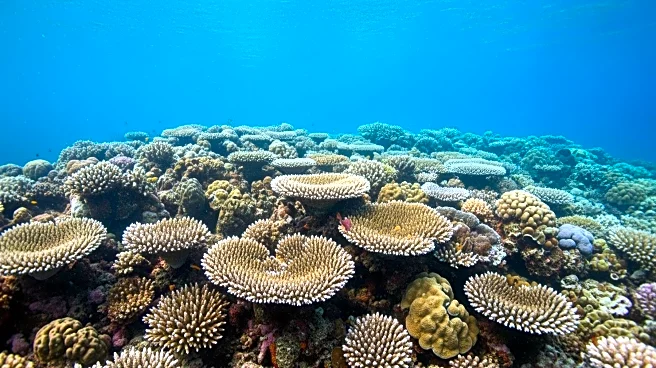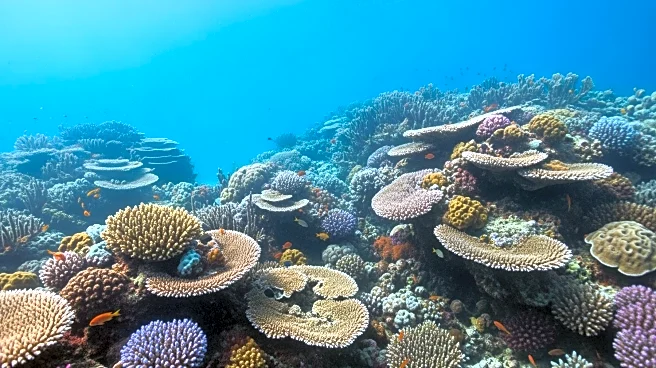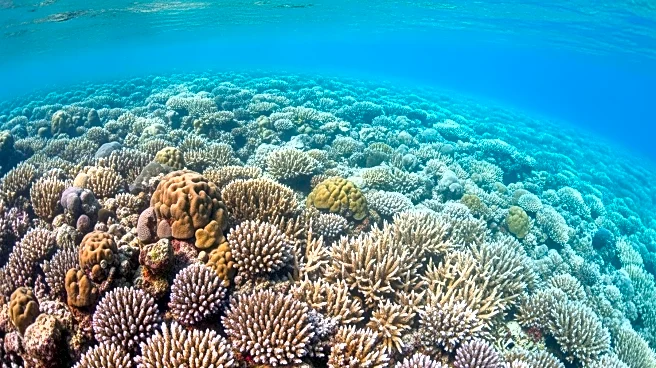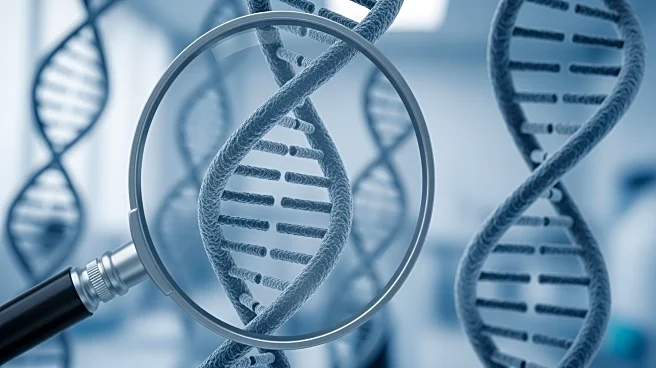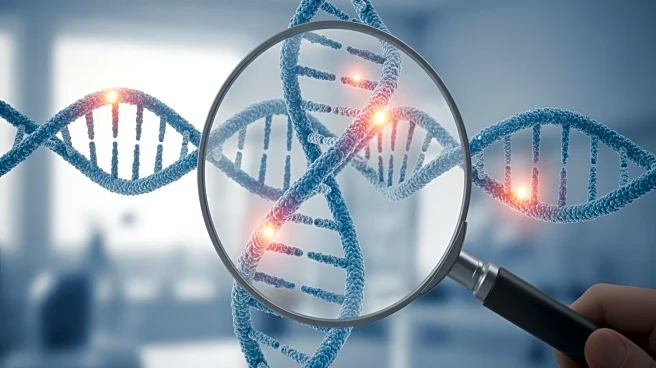What's Happening?
Researchers from the Max Planck Institute have developed a molecular probe that glows when sugars are broken down, allowing scientists to observe the competition between algae and microbes in the ocean.
This innovation uses automated glycan assembly to create a sugar tagged with fluorescent dyes, which emit light when the sugar's backbone is broken by enzymes. The probe was tested by tracking α-mannan turnover, a polysaccharide found in algal blooms, and performed effectively in various tests. This tool enables researchers to pinpoint active degraders, map glycan breakdown, and quantify turnover rates, offering new insights into microbial metabolism and carbon flux in marine ecosystems.
Why It's Important?
Understanding how sugars are degraded in marine ecosystems is crucial for comprehending the ocean's carbon cycle, which plays a significant role in global climate regulation. The ability to track sugar breakdown in real-time provides valuable data on microbial interactions and carbon sequestration processes. This research could lead to advancements in environmental science, offering potential applications in climate change studies and marine conservation efforts.
What's Next?
The development of the glowing sugar probe opens up new research avenues for studying phytoplankton-bacterioplankton interactions in the ocean. Scientists can now explore specific enzymatic activities linked to environmental processes, enhancing our understanding of carbon cycling. Future studies may focus on applying this technology to other ecosystems, such as the human gut, to investigate microbial metabolism and its impact on health.
Beyond the Headlines
This research exemplifies interdisciplinary collaboration, combining chemistry, microbiology, and ecology to address complex environmental questions. The probe's ability to reveal hidden degraders highlights the importance of innovative tools in advancing scientific knowledge and tackling global challenges like climate change.


